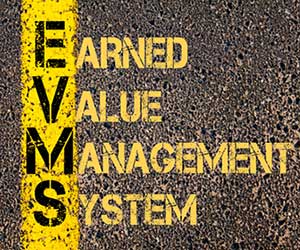
Earned value analysis is a project management method used to calculate the project status from two perspectives:
- Schedule. Is the project ahead of or behind schedule?
- Cost. Is the project over or under budget?
Let’s say you are the project manager for the renovation of 3 hotel rooms. The tasks are as follows:
- Preparation. Jan. 1 – Jan. 10, Budget $5,000.
- Room #1: Jan. 10 – 20, Budget $15,000.
- Room #2: Jan. 15 – 25, Budget $15,000.
- Room #3: Jan. 20 – 30, Budget $15,000.
- Wrap-up: Jan. 25 – 31, Budget $5,000.
It’s Jan. 16 today and you want to perform earned value analysis to determine the project status.
Solution
The first step is to determine the following three variables for each task:
- Planned Value (PV). The amount of the task that is supposed to have been completed.
- Earned Value (EV). The amount of the task that is actually completed.
- Actual Cost (AC). The cost of the activity to date.
This is normally done by first estimating the percent complete of each task and then multiplying by the budget.
We’re going to have to make a few assumptions. Let’s say the first task, Preparation, is complete. You figure you’re 20% complete on task 2 (Room #1) and 10% complete task 3 (Room #2), and you’ve spent $5,500 on task 1 (Preparation) and $3,500 on task 2 (Room #1).
Task 1 (Preparation):
- PV = 100% of $5,000 = $5,000.
- AC = $5,500.
- EV = 100% of $5,000 = $5,000
Task 2 (Room #1):
- PV = (5 days/10 days) x $15,000 = $7,500.
- AC = $3,500.
- EV = 20% of $15,000 = $3,000.
Task 3 (Room #2):
- PV = (1 day / 10 days) x $15,000 = $1,500.
- AC = $0
- EV = 10% x $15,000 = $1,500.
The initial table looks like this:
| Task | BAC | PV | AC | EV |
|---|---|---|---|---|
| Preparation | $5,000 | $5,000 | $5,500 | $5,000 |
| Room #1 | $15,000 | $7,500 | $3,500 | $3,000 |
| Room #2 | $15,000 | $1,500 | $0 | $1,500 |
| Room #3 | $15,000 | $0 | $0 | $0 |
| Wrap-up | $5,000 | $0 | $0 | $0 |
The next step is to calculate the following two variables:
- Schedule Variance. SV = EV – PV.
- Cost Variance. CV = EV – AC.
These two variables give you the project status from the schedule and cost perspective. Add a column for each. The table now looks like this.
| Task | BAC | PV | AC | EV | Schedule Variance (SV) | Cost Variance (CV) |
|---|---|---|---|---|---|---|
| Preparation | $5,000 | $5,000 | $5,500 | $5,000 | $0 | -$500 |
| Room #1 | $15,000 | $7,500 | $3,500 | $3,000 | -$4,500 | -$500 |
| Room #2 | $15,000 | $1,500 | $0 | $1,500 | $0 | $0 |
| Room #3 | $15,000 | $0 | $0 | $0 | $0 | $0 |
| Wrap-up | $5,000 | $0 | $0 | $0 | $0 | $0 |
| TOTAL | -$4,500 | -$1,000 | ||||
Conclusions
Since the schedule and cost variances are both negative, the project is behind schedule and over budget.
The cost variance is minor, and maybe you can find $1,000 somewhere between now and the end of the project.
But the schedule variance is significant for Room #1, about 50% of the task which means it should have accomplished almost twice as much as it has at this point. The project as a whole is only 17% complete but is 8% behind schedule. This is significant because it is getting behind early, and projects that get behind early almost always continue on that path. Since it’s all due to room #1, it might be a good idea to secure some resources so the completion of room #1 doesn’t hold up the others.
Other Resources
This is a basic example which is ideal for small projects. Our earned value management system includes a larger reference with additional earned value metrics.
- Earned Value Tutorial. The only one you’ll every need.
- Project Management Tutorial. The easy way to get and stay on top of it all.
- Project Scheduling Tutorial. The prerequisite to performing earned value analysis.






